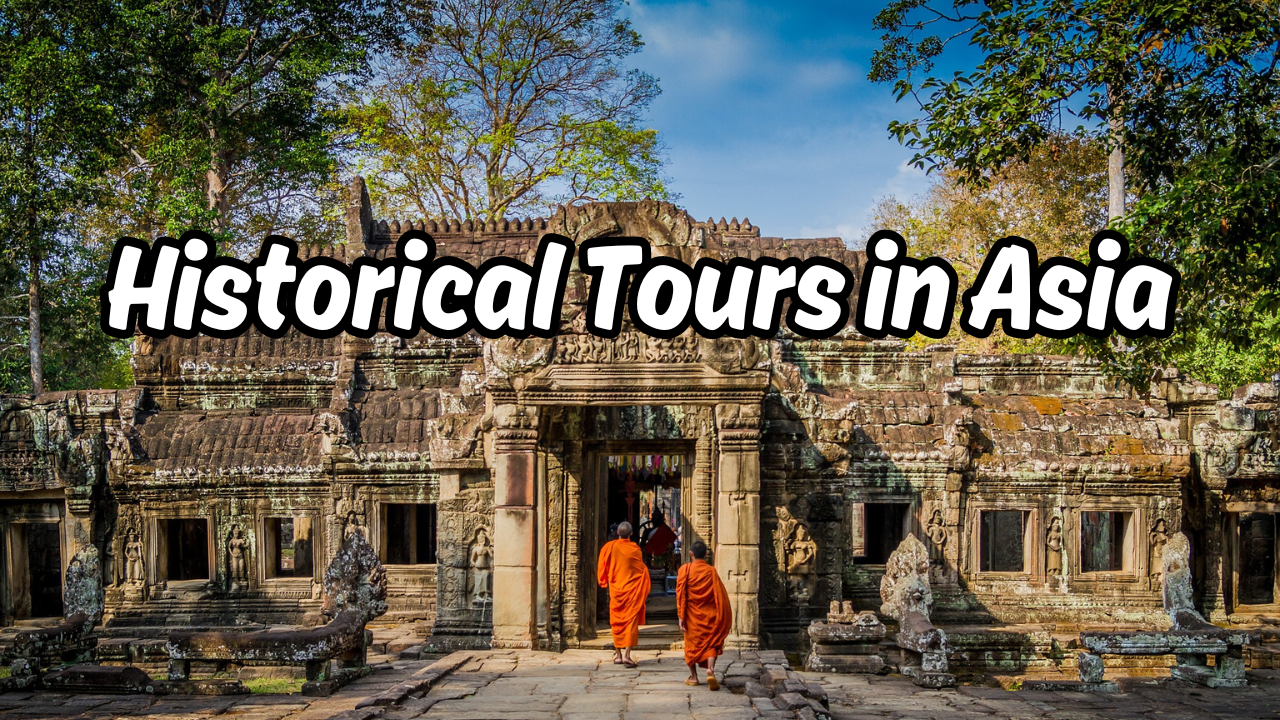Table of Contents
Introduction
Historical Tours in Asia, the largest and most diverse continent on Earth, is a treasure trove of historical marvels that span millennia. From the majestic Great Wall of China to the ancient temples of Angkor Wat in Cambodia, Asia’s historical sites offer an unparalleled glimpse into the civilizations that have shaped human history. Each country in Asia boasts its unique cultural heritage, reflected in its architecture, monuments, and artifacts. These historical tours provide travelers with the opportunity to immerse themselves in the rich tapestry of the past, experiencing firsthand the grandeur and intricacies of ancient empires, kingdoms, and dynasties.
Exploring Asia’s historical landmarks is not just about witnessing ancient structures but also understanding the stories and traditions that have been passed down through generations. Whether it’s the serene beauty of Kyoto’s temples in Japan, the romantic allure of the Taj Mahal in India, or the archaeological wonders of Petra in Jordan, each site offers a unique narrative that captivates the imagination. These tours enable visitors to connect with the past in a profound way, fostering a deeper appreciation for the cultural and historical legacies that continue to influence the present. For history enthusiasts and curious travelers alike, historical tours in Asia promise an enriching and unforgettable journey through time.
List of some Countries where you can go for Historical Tours in Asia
- Historical Tours in China
- Historical Tours in Japan
- Historical Tours in South Korea
- Historical Tours in Thailand
- Historical Tours in Vietnam
- Historical Tours in Cambodia
- Historical Tours in Indonesia
- Historical Tours in India
- Historical Tours in SriLanka
- Historical Tours in Nepal
- Historical Tours in Uzbekistan
- Historical Tours in Kazakhstan
- Historical Tours in Pakistan
- Historical Tours in Turkey
- Historical Tours in Iran
- Historical Tours in Jordan
Historical Tours in China

China, with its vast landscape and rich history spanning thousands of years, offers some of the most fascinating historical tours in the world. From the iconic Great Wall to the ancient Terracotta Army, China’s historical sites provide a deep dive into the culture, innovations, and legacy of one of the oldest civilizations on Earth. Here are some of the key destinations for Historical Tours in China:
1. The Great Wall of China
The Great Wall is one of the most iconic and recognizable symbols of China. Stretching over 13,000 miles, this ancient fortification was built to protect against invasions and raids. Visitors can explore various sections of the wall, each offering unique views and historical significance. Popular sections include:
- Badaling: The most visited and well-preserved section, offering easy access and stunning views.
- Mutianyu: Known for its watchtowers and scenic beauty, it’s a less crowded alternative to Badaling.
- Jinshanling: A remote and less restored section, perfect for hiking and photography.
2. The Forbidden City, Beijing
Located in the heart of Beijing, the Forbidden City served as the imperial palace for 24 emperors of the Ming and Qing Dynasties. This vast complex is home to nearly 1,000 buildings and countless artifacts. Highlights include:
- The Meridian Gate: The main entrance to the palace complex.
- Hall of Supreme Harmony: The largest hall, where major ceremonies were held.
- Imperial Garden: A beautiful retreat with pavilions, rockeries, and ancient trees.
3. The Terracotta Army, Xi’an
Discovered in 1974, the Terracotta Army is one of the most significant archaeological finds of the 20th century. The army consists of thousands of life-sized terracotta soldiers, horses, and chariots buried to protect Emperor Qin Shi Huang in the afterlife. Key features include:
- Pit 1: The largest pit, containing over 6,000 soldiers and horses.
- Pit 2: Houses cavalry and infantry units, as well as war chariots.
- Pit 3: The command center with high-ranking officers.
4. The Summer Palace, Beijing
The Summer Palace is a masterpiece of Chinese landscape garden design. It served as a royal garden and summer retreat for the Qing Dynasty emperors. Visitors can explore:
- Kunming Lake: A large, man-made lake ideal for boat rides.
- Longevity Hill: Offers stunning views and historical temples.
- The Long Corridor: An intricately decorated walkway with over 14,000 paintings.
5. The Temple of Heaven, Beijing
An architectural marvel and UNESCO World Heritage site, the Temple of Heaven was where emperors of the Ming and Qing Dynasties held annual ceremonies to pray for a good harvest. Key structures include:
- The Hall of Prayer for Good Harvests: A circular building with a triple-gabled roof.
- The Imperial Vault of Heaven: Houses the ceremonial tablets.
- The Circular Mound Altar: A three-tiered platform used for sacrifices.
6. Mogao Caves, Dunhuang
Also known as the Thousand Buddha Grottoes, the Mogao Caves are a treasure trove of Buddhist art and manuscripts. Dating back to the 4th century, the caves feature:
- Murals: Covering over 45,000 square meters, depicting Buddhist stories and figures.
- Statues: Thousands of Buddha statues in various poses and sizes.
- Library Cave: Once housed a vast collection of ancient manuscripts and texts.
7. Potala Palace, Lhasa
Located in Tibet, the Potala Palace is a symbol of Tibetan Buddhism and a UNESCO World Heritage site. This former residence of the Dalai Lama is renowned for its architectural grandeur and spiritual significance. Highlights include:
- The Red Palace: Houses chapels, stupas, and religious artifacts.
- The White Palace: Served as the living quarters of the Dalai Lama.
- The Golden Roof: Offers panoramic views of Lhasa and the surrounding mountains.
Conclusion
China’s historical tours offer a fascinating journey through time, showcasing the grandeur and cultural depth of its ancient civilization. Whether exploring the vast stretches of the Great Wall, the imperial splendor of the Forbidden City, or the spiritual serenity of the Temple of Heaven, each destination provides a unique glimpse into China’s rich heritage. For history enthusiasts and curious travelers, these tours promise an unforgettable experience.
Historical Tours in Japan
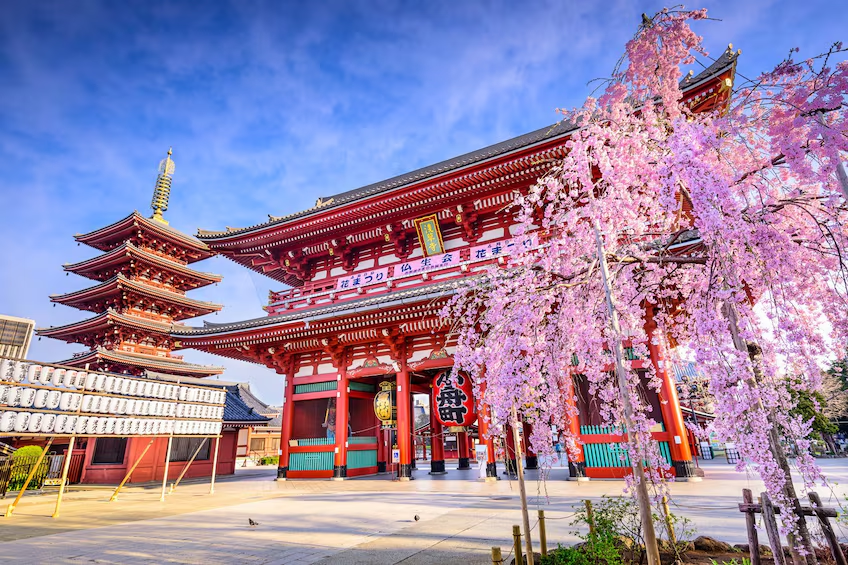
Historical Tours in Japan offer a deep dive into the country’s rich cultural and historical heritage. These tours take visitors through ancient temples, shrines, castles, and preserved towns that showcase Japan’s evolution from its early beginnings to its modern-day society. Here are some notable highlights and regions commonly featured in historical tours of Japan:
1. Kyoto
Kyoto, the former capital of Japan, is a must-visit for history enthusiasts. It is home to:
- Kinkaku-ji (Golden Pavilion): A stunning Zen Buddhist temple covered in gold leaf.
- Fushimi Inari Shrine: Famous for its thousands of red torii gates leading up the sacred Mount Inari.
- Nijo Castle: A historic castle that served as the residence of the Tokugawa shoguns.
- Gion District: Known for its traditional wooden machiya houses and geisha culture.
2. Nara
Nara, another ancient capital, is known for its historical treasures:
- Todai-ji Temple: Houses the Great Buddha, one of the largest bronze statues in the world.
- Nara Park: Home to hundreds of freely roaming deer, considered sacred messengers of the gods.
- Kasuga Taisha Shrine: Renowned for its lantern-lit pathways and historical significance.
3. Hiroshima
Hiroshima offers a poignant look into more recent history:
- Hiroshima Peace Memorial Park: Dedicated to the victims of the atomic bombing in 1945, featuring the iconic Atomic Bomb Dome.
- Hiroshima Castle: A reconstructed castle that provides insights into the region’s samurai history.
4. Tokyo
Japan’s capital is a blend of modernity and tradition:
- Edo-Tokyo Museum: Offers a comprehensive look at Tokyo’s history from the Edo period to modern times.
- Senso-ji Temple: Tokyo’s oldest temple, located in the historic Asakusa district.
- Imperial Palace: The primary residence of the Emperor of Japan, located on the former site of Edo Castle.
5. Kanazawa
Known for its well-preserved Edo-era districts:
- Kenroku-en Garden: One of Japan’s most famous landscape gardens.
- Kanazawa Castle: Offers insights into samurai culture and feudal Japan.
- Higashi Chaya District: Traditional teahouse district with beautifully preserved geisha houses.
6. Osaka
A city with a vibrant history and culture:
- Osaka Castle: A major historical landmark with a museum showcasing the castle’s history and the Toyotomi clan.
- Shitenno-ji Temple: One of the oldest Buddhist temples in Japan, founded in 593 AD.
7. Nikko
A UNESCO World Heritage site with stunning historical architecture:
- Toshogu Shrine: The lavishly decorated mausoleum of Tokugawa Ieyasu, the founder of the Tokugawa shogunate.
- Rinno-ji Temple: A significant Buddhist temple with a beautiful setting in the mountains.
8. Himeji
Home to Japan’s most spectacular castle:
- Himeji Castle: Known as the White Heron Castle, it is a UNESCO World Heritage site and one of the best-preserved samurai castles in Japan.
9. Miyajima Island
Famous for its iconic floating torii gate:
- Itsukushima Shrine: A Shinto shrine known for its dramatic setting on the water.
Tour Activities
- Guided Tours: Professional guides provide historical context and interesting anecdotes.
- Cultural Experiences: Tea ceremonies, traditional craft workshops, and kimono-wearing sessions.
- Museums: Visits to museums that cover various aspects of Japanese history and culture.
- Walking Tours: Exploring historical districts on foot to soak in the atmosphere.
Best Time to Visit
- Spring (March to May): For cherry blossoms and pleasant weather.
- Autumn (September to November): For colorful autumn foliage and comfortable temperatures.
Historical tours in Japan offer an enriching experience, combining educational insights with the beauty and serenity of Japan’s historical sites.
Conclusion
Historical tours in Japan provide an immersive journey through the nation’s rich cultural and historical heritage. From the ancient temples and shrines of Kyoto and Nara to the poignant memorials of Hiroshima and the majestic castles of Himeji and Osaka, these tours offer a unique opportunity to explore the depth and diversity of Japan’s past. By engaging in guided tours, cultural experiences, and museum visits, travelers gain a comprehensive understanding of the country’s evolution and its enduring traditions. Whether visiting during the vibrant cherry blossom season or the colorful autumn months, historical tours in Japan promise a memorable and educational experience that highlights the beauty, resilience, and cultural wealth of this fascinating country.
Historical Tours in South Korea
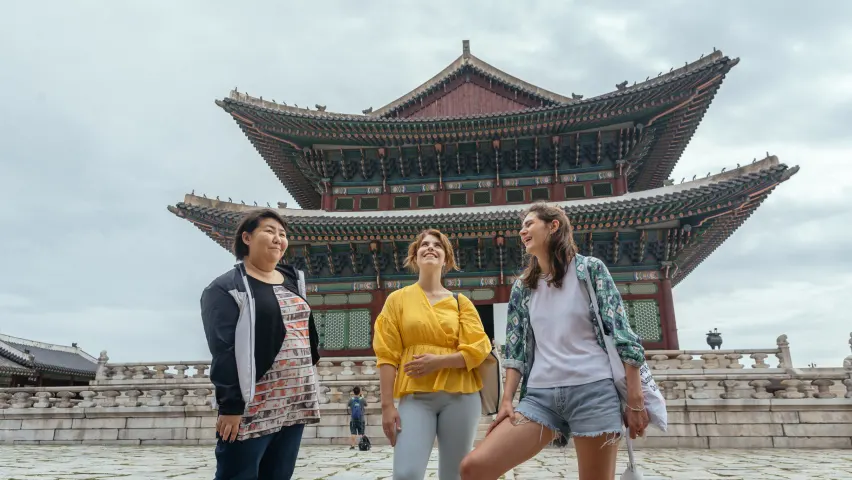
Historical Tours in South Korea offer an in-depth look at the country’s rich cultural and historical legacy, spanning thousands of years. These tours highlight ancient palaces, traditional villages, temples, and historical sites that reflect Korea’s unique heritage and development. Here are some key highlights and regions commonly featured in historical tours of South Korea:
1. Seoul
South Korea’s capital is a blend of modernity and historical treasures:
- Gyeongbokgung Palace: The main royal palace of the Joseon dynasty, known for its beautiful architecture and the changing of the guard ceremony.
- Changdeokgung Palace: A UNESCO World Heritage site with a stunning Secret Garden.
- Bukchon Hanok Village: A traditional village with hanok (Korean traditional houses) dating back to the Joseon dynasty.
- Jongmyo Shrine: A Confucian shrine dedicated to the deceased kings and queens of the Joseon dynasty.
2. Gyeongju
Often referred to as the “museum without walls,” Gyeongju was the capital of the ancient Silla kingdom:
- Bulguksa Temple: A UNESCO World Heritage site known for its exquisite architecture and historic significance.
- Seokguram Grotto: Another UNESCO site featuring a magnificent stone Buddha statue.
- Daereungwon Tomb Complex: A collection of large burial mounds of Silla royalty.
- Cheomseongdae Observatory: The oldest existing astronomical observatory in Asia.
3. Andong
Famous for its preservation of Korean culture and traditions:
- Hahoe Folk Village: A UNESCO World Heritage site showcasing traditional Korean houses and Confucian culture.
- Andong Mask Dance Festival: An annual event celebrating traditional mask dances.
- Dosan Seowon: A Confucian academy established by the scholar Yi Hwang.
4. Jeonju
Known for its traditional food and cultural heritage:
- Jeonju Hanok Village: Features over 800 traditional hanok houses, offering cultural experiences such as hanji (traditional Korean paper) making, tea ceremonies, and traditional Korean food.
- Gyeonggijeon Shrine: Houses the portrait of King Taejo, the founder of the Joseon dynasty.
5. Suwon
Home to the impressive Hwaseong Fortress:
- Hwaseong Fortress: A UNESCO World Heritage site with well-preserved walls, gates, and watchtowers.
- Hwaseong Haenggung Palace: A temporary palace used by the kings during their visits to the fortress.
6. Incheon
Significant for its modern history and as a gateway to Korea:
- Incheon Landing Operation Memorial Hall: Commemorates the Incheon Landing during the Korean War.
- Chinatown: Reflects the cultural exchanges between Korea and China over the centuries.
- Jayu Park: The first Western-style park in Korea, offering views of Incheon Port and historical monuments.
7. Busan
South Korea’s second-largest city with a mix of historical and modern attractions:
- Beomeosa Temple: A historic Buddhist temple nestled in the mountains.
- Gamcheon Culture Village: Known for its colorful houses, steep streets, and artistic murals.
- UN Memorial Cemetery: Honors the UN soldiers who fought during the Korean War.
8. Jeju Island
Renowned for its natural beauty and unique cultural sites:
- Seongsan Ilchulbong (Sunrise Peak): A volcanic crater offering spectacular sunrise views.
- Jeju Folk Village Museum: Showcases traditional Jeju life and culture.
- Seongeup Folk Village: Preserves the island’s traditional culture and architecture.
Tour Activities
- Guided Tours: Professional guides provide historical context and interesting stories.
- Cultural Experiences: Hanbok (traditional Korean clothing) wearing, traditional craft workshops, and Korean tea ceremonies.
- Museum Visits: Trips to museums that cover various aspects of Korean history and culture.
- Walking Tours: Exploring historical districts on foot to fully experience the atmosphere.
Best Time to Visit
- Spring (April to June): For cherry blossoms and pleasant weather.
- Autumn (September to November): For colorful autumn foliage and comfortable temperatures.
Historical tours in South Korea offer a rich and varied exploration of the country’s past, providing insight into its cultural traditions, historical events, and significant landmarks. Whether visiting ancient palaces, exploring traditional villages, or learning about the Korean War, these tours offer a comprehensive and engaging way to experience South Korea’s history and heritage.
Conclusion
Historical tours in South Korea provide a captivating journey through the nation’s extensive and diverse cultural heritage. From the ancient palaces and temples of Seoul and Gyeongju to the traditional villages of Andong and Jeonju, these tours offer visitors a profound understanding of Korea’s historical evolution and cultural richness. With activities such as guided tours, cultural workshops, and museum visits, travelers can deeply immerse themselves in Korea’s traditions and history. Whether exploring during the vibrant cherry blossom season or the colorful autumn months, historical tours in South Korea promise a memorable and enriching experience that highlights the country’s unique cultural identity and historical significance.
Historical Tours in Thailand
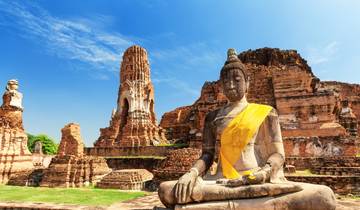
Historical Tours in Thailand offer an immersive experience into the country’s rich cultural and historical legacy. These tours take visitors through ancient ruins, magnificent temples, historic cities, and traditional villages, showcasing Thailand’s evolution from its early kingdoms to its present-day society. Here are some key highlights and regions commonly featured in historical tours of Thailand:
1. Bangkok
Thailand’s bustling capital is a blend of modernity and historical treasures:
- Grand Palace: The former royal residence, featuring the revered Temple of the Emerald Buddha (Wat Phra Kaew).
- Wat Pho: Home to the giant reclining Buddha and a center for traditional Thai massage.
- Wat Arun (Temple of Dawn): Known for its stunning riverside location and towering spires.
- Jim Thompson House: A museum dedicated to the American businessman who helped revive the Thai silk industry.
2. Ayutthaya
The ancient capital of the Ayutthaya Kingdom, a UNESCO World Heritage site:
- Wat Mahathat: Famous for the Buddha head entwined in tree roots.
- Wat Phra Si Sanphet: The grandest and most significant temple in the Ayutthaya Historical Park.
- Bang Pa-In Royal Palace: A beautiful complex of royal residences used by the Thai kings.
3. Sukhothai
Known as the cradle of Thai civilization and a UNESCO World Heritage site:
- Sukhothai Historical Park: Features well-preserved ruins of temples and palaces, including Wat Mahathat and Wat Si Chum.
- Si Satchanalai Historical Park: Offers additional ancient ruins and a glimpse into the Sukhothai period’s architectural style.
4. Chiang Mai
A city with a rich Lanna heritage and numerous historical sites:
- Wat Phra That Doi Suthep: A sacred temple located on a mountain with panoramic views of the city.
- Old City: Surrounded by ancient walls and moats, home to numerous historic temples like Wat Chedi Luang and Wat Phra Singh.
- Wiang Kum Kam: An ancient city with historical ruins dating back to the 8th century.
5. Chiang Rai
A region known for its cultural and historical significance:
- Wat Rong Khun (White Temple): A contemporary, unconventional temple known for its stunning white facade.
- Wat Phra Kaew: The original home of the Emerald Buddha, now housed in Bangkok.
- Baan Dam (Black House): An art museum with dark, intricate designs reflecting northern Thai culture.
6. Kanchanaburi
A town with a poignant WWII history:
- Bridge over the River Kwai: Part of the Death Railway built during WWII.
- Hellfire Pass Memorial Museum: Commemorates the lives lost during the construction of the Death Railway.
- Erawan National Park: Known for its beautiful waterfalls and natural landscapes.
7. Lopburi
One of Thailand’s oldest cities, rich in Khmer and Ayutthaya history:
- Phra Prang Sam Yot: A Khmer-style temple known for the monkeys that inhabit the area.
- King Narai’s Palace: A historical palace from the Ayutthaya period.
Tour Activities
- Guided Tours: Professional guides provide historical context and fascinating stories.
- Cultural Experiences: Traditional Thai cooking classes, craft workshops, and classical dance performances.
- Museum Visits: Exploring museums that offer insights into Thailand’s history and cultural heritage.
- Walking Tours: Exploring historic districts and ancient ruins on foot to fully experience the atmosphere.
Best Time to Visit
- Cool Season (November to February): Offers the most pleasant weather for exploring historical sites.
- Dry Season (March to May): Though hotter, it’s still a good time for tours with fewer crowds.
Historical tours in Thailand offer a profound and engaging exploration of the country’s past, providing insights into its cultural traditions, significant events, and historical landmarks. Whether visiting the ancient ruins of Ayutthaya and Sukhothai, the historical sites of Chiang Mai and Chiang Rai, or the poignant WWII memorials in Kanchanaburi, these tours offer a comprehensive and enriching way to experience Thailand’s rich history and heritage.
Conclusion
Historical tours in Thailand provide a captivating journey through the country’s rich and diverse cultural heritage. From the grandeur of Bangkok’s temples and palaces to the ancient ruins of Ayutthaya and Sukhothai, and from the historical treasures of Chiang Mai and Chiang Rai to the poignant WWII sites in Kanchanaburi, these tours offer an in-depth look at Thailand’s historical evolution. By engaging in guided tours, cultural experiences, and museum visits, travelers gain a comprehensive understanding of Thailand’s past and its enduring traditions. Whether exploring during the pleasant cool season or the quieter dry season, historical tours in Thailand promise a memorable and enriching experience that highlights the country’s unique cultural identity and historical significance.
Historical Tours in Vietnam
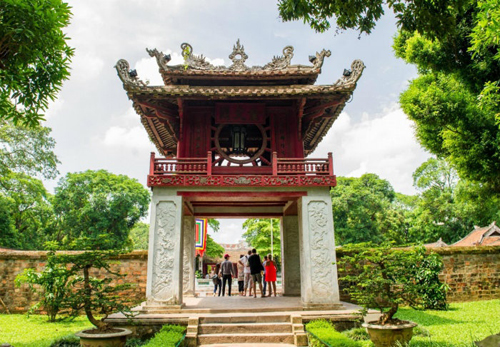
Historical Tours in Vietnam offer a rich exploration of the country’s deep and varied cultural heritage, spanning centuries of history from ancient kingdoms to colonial eras and modern times. These tours include visits to ancient temples, historic cities, war sites, and traditional villages, providing a comprehensive understanding of Vietnam’s historical journey. Here are some key highlights and regions commonly featured in historical tours of Vietnam:
1. Hanoi
Vietnam’s capital city, rich in history and culture:
- Ho Chi Minh Mausoleum: The final resting place of the revolutionary leader Ho Chi Minh.
- Imperial Citadel of Thang Long: A UNESCO World Heritage site showcasing remnants of Vietnam’s ancient imperial history.
- Temple of Literature: Vietnam’s first university, dedicated to Confucius and scholars.
- Hoa Lo Prison (Hanoi Hilton): A museum that provides insights into the French colonial era and the Vietnam War.
2. Hue
The former imperial capital of the Nguyen Dynasty, known for its historical significance:
- Imperial City (Citadel): A vast complex of palaces, temples, walls, and gates, also a UNESCO World Heritage site.
- Thien Mu Pagoda: A historic pagoda overlooking the Perfume River.
- Tombs of the Nguyen Emperors: Elaborate mausoleums set in scenic locations, such as the tombs of Emperor Tu Duc and Emperor Khai Dinh.
3. Hoi An
An ancient trading port with well-preserved architecture and cultural heritage:
- Hoi An Ancient Town: A UNESCO World Heritage site with narrow streets, historic buildings, and traditional shophouses.
- Japanese Covered Bridge: A 16th-century bridge that is an iconic symbol of Hoi An.
- Old House of Tan Ky: A preserved 18th-century house showcasing traditional Vietnamese architecture.
4. My Son
A cluster of abandoned and partially ruined Hindu temples:
- My Son Sanctuary: A UNESCO World Heritage site that was a religious center for the Champa Kingdom, with impressive Cham architecture and sculptures.
5. Ho Chi Minh City (Saigon)
Vietnam’s largest city, with a mix of modernity and historical sites:
- Reunification Palace: The site of the end of the Vietnam War, preserved as it was in 1975.
- War Remnants Museum: Displays related to the Vietnam War and its impacts.
- Cu Chi Tunnels: An extensive network of underground tunnels used by Viet Cong soldiers during the Vietnam War.
6. Mekong Delta
Known for its rich cultural and historical heritage:
- Cai Be and Can Tho: Home to floating markets and traditional villages.
- Vinh Trang Pagoda: A historic Buddhist temple with unique architecture.
7. Phong Nha-Ke Bang National Park
A UNESCO World Heritage site with ancient karst landscapes:
- Phong Nha Cave: Famous for its rock formations and historical significance as a hiding place during the Vietnam War.
- Paradise Cave: Known for its stunning stalactites and stalagmites.
8. Ninh Binh
Often referred to as “Halong Bay on land”:
- Hoa Lu Ancient Capital: The capital of Vietnam in the 10th and 11th centuries, with remnants of ancient temples and fortifications.
- Bai Dinh Pagoda: The largest complex of Buddhist temples in Vietnam.
9. Dien Bien Phu
A significant site in the history of Vietnam’s struggle for independence:
- Dien Bien Phu Battlefield: The site of the decisive battle in 1954 that ended French colonial rule in Vietnam.
- Dien Bien Phu Museum: Exhibits related to the battle and its significance.
Tour Activities
- Guided Tours: Expert guides provide historical context and engaging stories.
- Cultural Experiences: Traditional craft workshops, cooking classes, and local performances.
- Museum Visits: Exploring museums that offer insights into Vietnam’s history and culture.
- Walking and Boat Tours: Exploring historical districts and scenic waterways.
Best Time to Visit
- Spring (February to April): Pleasant weather ideal for outdoor exploration.
- Autumn (September to November): Cooler temperatures and lower humidity.
Historical tours in Vietnam provide a profound and engaging exploration of the country’s past, highlighting its cultural traditions, significant historical events, and architectural marvels. Whether exploring ancient temples, historic cities, or war sites, these tours offer a comprehensive and enriching way to experience Vietnam’s rich history and heritage.
Conclusion
Historical tours in Vietnam offer an enriching journey through the nation’s diverse and profound cultural heritage. From the ancient temples and imperial cities of Hue and Hanoi to the charming trading port of Hoi An and the poignant war sites of Ho Chi Minh City and Dien Bien Phu, these tours provide a comprehensive understanding of Vietnam’s historical evolution. By engaging in guided tours, cultural experiences, and museum visits, travelers gain deep insights into Vietnam’s past and its enduring traditions. Whether visiting during the pleasant spring or the cooler autumn months, historical tours in Vietnam promise a memorable and educational experience that showcases the country’s unique cultural identity and historical significance.
Historical Tours in Cambodia
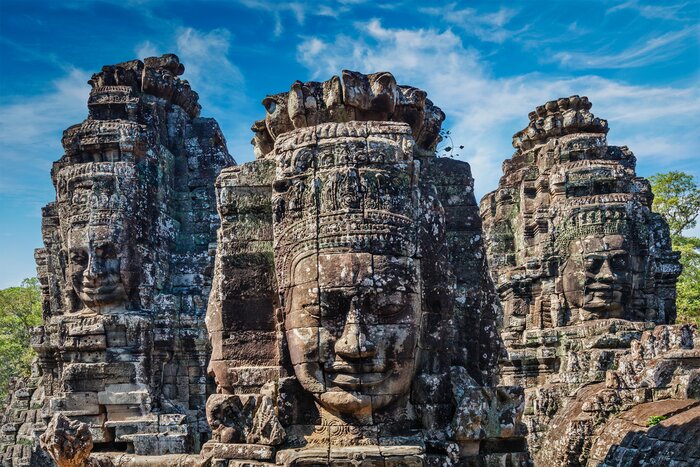
Historical Tours in Cambodia offer an in-depth exploration of the country’s rich cultural and historical heritage, characterized by magnificent ancient temples, colonial architecture, and significant historical sites. These tours take visitors through the fascinating journey of Cambodia from its glorious Khmer Empire to its more recent historical events. Here are some key highlights and regions commonly featured in historical tours of Cambodia:
1. Siem Reap
Home to the magnificent temples of Angkor, Siem Reap is the gateway to Cambodia’s ancient history:
- Angkor Wat: The largest religious monument in the world and a UNESCO World Heritage site, known for its stunning architecture and intricate carvings.
- Angkor Thom: The last capital of the Khmer Empire, featuring the famous Bayon Temple with its massive stone faces.
- Ta Prohm: Known as the “Tomb Raider Temple,” it is famous for the trees growing out of its ruins.
- Banteay Srei: A 10th-century temple dedicated to the Hindu god Shiva, renowned for its exquisite sandstone carvings.
2. Phnom Penh
Cambodia’s vibrant capital city, offering a mix of historical and cultural sites:
- Royal Palace: The official residence of the King of Cambodia, featuring the Silver Pagoda with its floor made of silver tiles.
- Tuol Sleng Genocide Museum (S-21): A former high school turned into a notorious prison during the Khmer Rouge regime.
- Choeung Ek Genocidal Center (Killing Fields): A memorial site where many victims of the Khmer Rouge were executed.
- National Museum of Cambodia: Houses an extensive collection of Khmer art and artifacts.
3. Battambang
A city known for its well-preserved colonial architecture and historical significance:
- Battambang Bat Caves: Known for the impressive sight of millions of bats leaving the caves at dusk.
- Phnom Sampeau: A hilltop temple with stunning views and caves used as execution sites during the Khmer Rouge era.
- Wat Ek Phnom: An 11th-century temple ruin located near the city.
4. Kampot
A riverside town with historical French colonial buildings and natural attractions:
- Bokor Hill Station: A former French resort with abandoned buildings and stunning views over the Gulf of Thailand.
- Kampot Pepper Plantations: Visit traditional farms producing the famous Kampot pepper, renowned worldwide.
- Old French Quarter: Stroll through the town to see well-preserved colonial architecture.
5. Kep
A coastal town known for its history and serene beaches:
- Kep National Park: Offers scenic hiking trails and views of the surrounding countryside.
- Crab Market: Famous for fresh seafood, particularly the blue crabs.
- French Villas: Explore the abandoned French colonial villas, remnants of Kep’s past as a French resort town.
6. Ratanakiri
An area known for its natural beauty and indigenous culture:
- Yeak Laom Lake: A volcanic crater lake surrounded by lush forest, considered sacred by local tribes.
- Banlung Market: Offers a glimpse into the daily life and culture of the indigenous people.
- Waterfalls: Numerous beautiful waterfalls, including Cha Ong and Ka Tieng.
7. Preah Vihear
A remote province known for its stunning temple complex:
- Preah Vihear Temple: A UNESCO World Heritage site situated on a cliff, offering breathtaking views and significant historical value.
Tour Activities
- Guided Tours: Expert guides provide historical context and engaging stories.
- Cultural Experiences: Traditional dance performances, craft workshops, and cooking classes.
- Museum Visits: Exploring museums that offer insights into Cambodia’s history and cultural heritage.
- Walking and Cycling Tours: Exploring historical districts and countryside at a leisurely pace.
Best Time to Visit
- Dry Season (November to April): Ideal for outdoor exploration with less rain and comfortable temperatures.
- Cool Season (December to February): Offers the most pleasant weather for visiting historical sites.
Historical tours in Cambodia provide a captivating journey through the nation’s profound and diverse cultural heritage. By visiting ancient temples, colonial cities, and significant historical sites, travelers gain a comprehensive understanding of Cambodia’s past and its enduring traditions. Whether exploring during the dry or cool season, these tours promise a memorable and educational experience that highlights Cambodia’s unique cultural identity and historical significance.
Conclusion
Historical tours in Cambodia offer a profound journey through the country’s rich and diverse cultural heritage. From the awe-inspiring temples of Angkor in Siem Reap to the poignant historical sites of Phnom Penh, and from the colonial architecture of Battambang to the natural beauty of Ratanakiri, these tours provide an in-depth understanding of Cambodia’s historical evolution. Engaging in guided tours, cultural experiences, and museum visits, travelers gain valuable insights into Cambodia’s past and its enduring traditions. Whether visiting during the dry season or the cooler months, historical tours in Cambodia promise a memorable and enriching experience that showcases the country’s unique cultural identity and historical significance.
Historical Tours in Indonesia
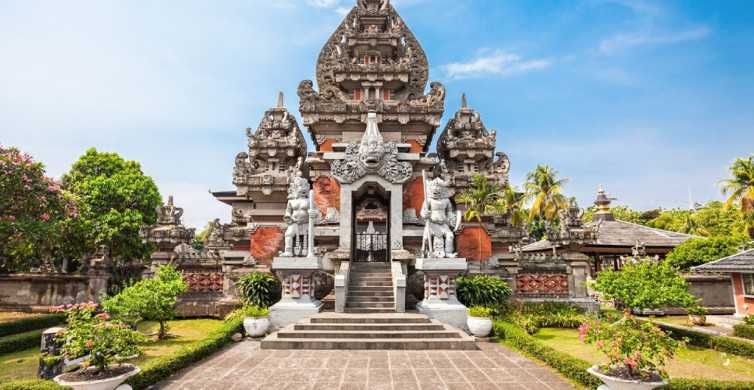
Historical Tours in Indonesia offer a fascinating exploration of the country’s diverse cultural heritage, spanning ancient kingdoms, colonial periods, and modern historical events. Indonesia, with its thousands of islands, boasts a rich tapestry of historical sites, each offering unique insights into its past. Here are key highlights and regions commonly featured in historical tours of Indonesia:
1. Jakarta
As the capital city, Jakarta holds significant historical sites and cultural landmarks:
- National Monument (Monas): Symbolizing Indonesia’s struggle for independence, offering panoramic views from its observation deck.
- Old Town (Kota Tua): A colonial-era district with Dutch colonial buildings, museums, and the Jakarta History Museum.
- Istiqlal Mosque: The largest mosque in Southeast Asia, symbolizing religious tolerance and national unity.
2. Yogyakarta
A cultural hub known for its Javanese traditions and historical treasures:
- Prambanan Temple: A UNESCO World Heritage site, known for its impressive Hindu temples and intricate carvings.
- Borobudur Temple: The world’s largest Buddhist temple, also a UNESCO site, with magnificent stupas and bas-reliefs depicting Buddhist teachings.
- Kraton Yogyakarta: The royal palace of the Sultan of Yogyakarta, showcasing Javanese court culture and architecture.
3. Central Java
Rich in archaeological and historical sites from various periods:
- Dieng Plateau: Ancient Hindu temples dating back to the 8th century, such as Arjuna Temples and Candi Bima.
- Pawon and Mendut Temples: Buddhist temples near Borobudur, with significant historical and religious importance.
- Sultan’s Palace (Keraton Solo): A royal palace in Surakarta (Solo), showcasing Javanese royal heritage and culture.
4. Bali
Known for its unique blend of Hindu culture, art, and history:
- Besakih Temple: Bali’s mother temple, located on the slopes of Mount Agung, the highest volcano in Bali.
- Ubud Palace: A historical palace in Ubud, showcasing traditional Balinese architecture and culture.
- Tirta Empul Temple: A Hindu water temple famous for its holy spring water used in purification rituals.
5. Bandung
A city with Dutch colonial architecture and historical significance:
- Gedung Sate: A colonial-era government building known for its unique architecture and historical importance.
- Asia-Africa Conference Museum: Commemorates the 1955 Asian-African Conference, a significant event in the history of post-colonial nations.
- Saung Angklung Udjo: Cultural center showcasing traditional Sundanese music and performing arts.
6. Makassar
A gateway to Eastern Indonesia with a blend of historical and cultural sites:
- Fort Rotterdam: A Dutch fort from the 17th century, showcasing colonial architecture and history.
- Losari Beach: A popular waterfront area with cultural performances and local culinary delights.
7. Banda Islands
Historically significant for the spice trade and colonial era:
- Fort Belgica: A Dutch fort on Banda Neira, providing insights into the spice trade history.
- Historic Plantations: Explore nutmeg and clove plantations, crucial in the history of the spice trade.
Tour Activities
- Guided Tours: Expert guides provide historical context and local insights.
- Cultural Performances: Traditional dance and music performances showcasing Indonesia’s diverse cultural heritage.
- Art and Craft Workshops: Learn traditional Indonesian crafts such as batik making, wood carving, and traditional dance.
Best Time to Visit
- Dry Season (April to October): Ideal for outdoor activities and exploring historical sites.
- Cool Season (June to September): Pleasant temperatures, suitable for visiting archaeological sites and cultural landmarks.
Historical tours in Indonesia offer a captivating journey through the country’s rich history and cultural diversity. By exploring ancient temples, royal palaces, colonial architecture, and significant historical sites, travelers gain a deeper appreciation of Indonesia’s past and its vibrant cultural traditions.
Conclusion
Historical tours in Indonesia provide a captivating journey through the country’s diverse and storied past, offering a deep dive into its rich cultural heritage. From the majestic temples of Borobudur and Prambanan in Yogyakarta to the colonial remnants of Jakarta’s Old Town, and from Bali’s spiritual landmarks to the cultural treasures of Central Java, these tours offer a comprehensive exploration of Indonesia’s historical evolution. Engaging in guided tours, cultural performances, and visits to ancient sites, travelers gain profound insights into Indonesia’s complex history and enduring traditions. Whether exploring during the dry season for optimal weather or the cooler months for comfortable travel, historical tours in Indonesia promise a memorable and enlightening experience that highlights the country’s unique cultural identity and historical significance.
Historical Tours in India
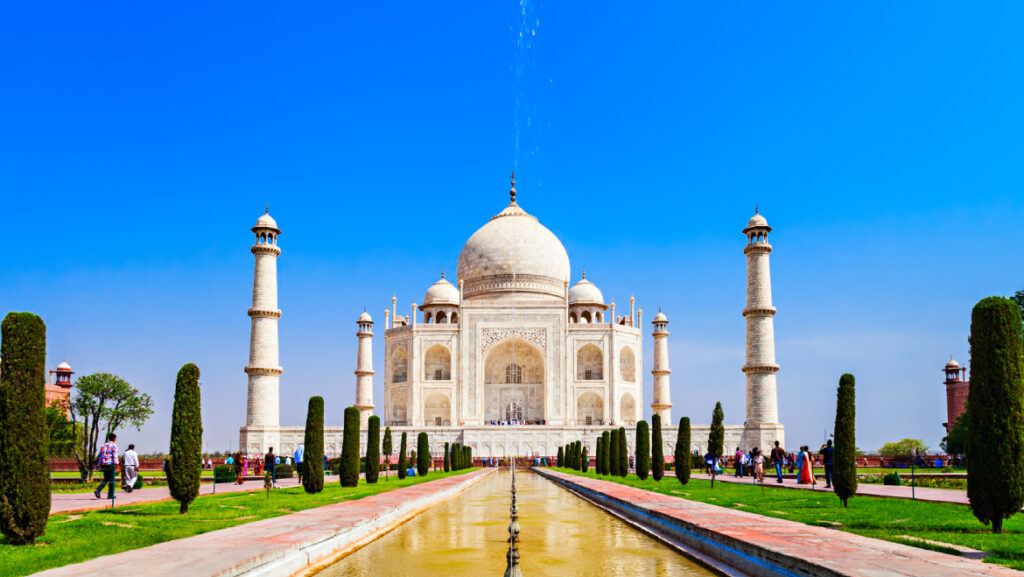
Historical Tours in India offer a rich tapestry of cultural heritage, showcasing millennia of history, diverse civilizations, and architectural marvels. From ancient monuments to medieval forts and palaces, each region of India presents unique insights into its rich past. Here’s a detailed look at key highlights and regions commonly featured in historical tours of India:
1. Delhi
India’s capital city, known for its blend of ancient and modern:
- Red Fort: A UNESCO World Heritage site, symbolizing the grandeur of Mughal architecture.
- Qutub Minar: The tallest brick minaret in the world, dating back to the Delhi Sultanate.
- Humayun’s Tomb: A precursor to the Taj Mahal, known for its Persian-inspired architecture and lush gardens.
- Jama Masjid: India’s largest mosque, built by Emperor Shah Jahan.
2. Agra
Home to the iconic Taj Mahal and other Mughal-era monuments:
- Taj Mahal: A UNESCO World Heritage site and one of the New Seven Wonders of the World, an exquisite marble mausoleum.
- Agra Fort: A UNESCO site housing palaces, mosques, and audience halls built by Mughal emperors.
- Fatehpur Sikri: A ghost city and UNESCO World Heritage site, built by Emperor Akbar with stunning palaces and courtyards.
3. Jaipur (Rajasthan)
Known as the Pink City for its distinctive architecture:
- Amber Fort: A hilltop fort with intricate Hindu-style architecture and sweeping views.
- City Palace: A royal palace complex with museums and courtyards displaying Rajput and Mughal art.
- Hawa Mahal: The Palace of Winds, a unique five-story palace with 953 windows for royal women to observe street festivities.
4. Varanasi
One of the oldest continuously inhabited cities in the world, on the banks of the Ganges:
- Ganges River Ghats: Ancient steps leading to the sacred river, used for religious rituals and cremations.
- Kashi Vishwanath Temple: A famous Hindu temple dedicated to Lord Shiva, one of the twelve Jyotirlingas.
- Sarnath: Where Buddha delivered his first sermon after attaining enlightenment, with ancient stupas and monasteries.
5. Khajuraho
Famous for its exquisite temples adorned with intricate erotic sculptures:
- Khajuraho Group of Monuments: A UNESCO World Heritage site, showcasing Hindu and Jain temples with intricate carvings and sculptures.
6. Mumbai (Maharashtra)
A bustling metropolis with a rich colonial heritage:
- Gateway of India: A symbolic colonial monument overlooking the Arabian Sea.
- Elephanta Caves: UNESCO World Heritage site with rock-cut temples dedicated to Lord Shiva on Elephanta Island.
- Chhatrapati Shivaji Maharaj Terminus: A UNESCO site and historic railway station known for its Victorian Gothic architecture.
7. Udaipur (Rajasthan)
Known as the City of Lakes, with palaces and temples:
- City Palace: A massive complex overlooking Lake Pichola, featuring intricate architecture and museums.
- Jag Mandir: An island palace on Lake Pichola, offering scenic views and historical significance.
8. Kolkata (West Bengal)
Formerly known as Calcutta, a cultural hub with colonial landmarks:
- Victoria Memorial: A grand marble building dedicated to Queen Victoria, now a museum showcasing Kolkata’s history.
- Howrah Bridge: An iconic cantilever bridge over the Hooghly River, connecting Kolkata with Howrah.
Tour Activities
- Guided Tours: Expert guides provide historical context and local insights.
- Cultural Performances: Traditional dance, music, and theater performances showcasing India’s diverse cultural heritage.
- Culinary Tours: Sampling regional cuisines and street food delicacies.
- Craft Workshops: Learning traditional crafts such as pottery, textiles, and jewelry making.
Best Time to Visit
- Winter Season (October to March): Pleasant weather across most of India, ideal for outdoor exploration.
- Spring Season (February to April): For festivals like Holi and religious celebrations.
Historical tours in India offer an immersive experience into the country’s vast and vibrant history, from the ancient civilizations of the Indus Valley to the Mughal Empire and British colonial rule. Each destination reveals unique architectural styles, cultural traditions, and historical narratives, making India a captivating destination for history enthusiasts and cultural explorers alike.
Conclusion
Historical tours in India offer an unparalleled journey through the country’s rich and diverse cultural tapestry. From the timeless beauty of the Taj Mahal in Agra to the bustling streets of Delhi’s ancient monuments, and from the majestic forts of Rajasthan to the spiritual tranquility of Varanasi, these tours encapsulate India’s millennia-old history and cultural heritage. Engaging in guided tours, witnessing cultural performances, and exploring architectural marvels, travelers immerse themselves in India’s vibrant past and enduring traditions. Whether visiting during the winter season for comfortable weather or experiencing vibrant festivals, historical tours in India promise an unforgettable experience that celebrates the country’s unique cultural identity and profound historical significance.
Historical Tours in SriLanka
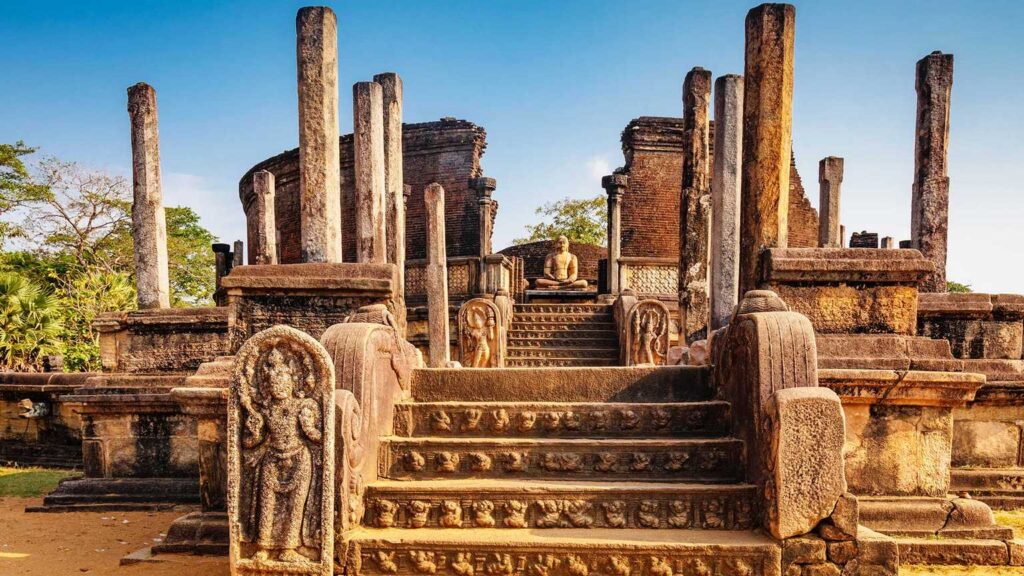
Historical Tours in SriLanka offer a fascinating exploration of the island nation’s rich cultural heritage, spanning ancient kingdoms, colonial periods, and significant historical sites. Sri Lanka, known for its lush landscapes and diverse history, boasts a wealth of archaeological wonders, religious landmarks, and colonial architecture. Here’s a detailed look at key highlights and regions commonly featured in historical tours of Sri Lanka:
1. Anuradhapura
One of the ancient capitals of Sri Lanka, renowned for its well-preserved ruins:
- Sri Maha Bodhi: A sacred fig tree believed to be a sapling from the original Bodhi tree under which Buddha attained enlightenment.
- Ruwanwelisaya: A magnificent stupa, one of the largest in Sri Lanka, dating back to the 2nd century BC.
- Jetavanaramaya: Another impressive stupa, once the tallest monument in the ancient world.
2. Polonnaruwa
Another ancient capital with impressive ruins and UNESCO World Heritage sites:
- Gal Vihara: Famous for its colossal Buddha statues carved out of granite rock.
- Royal Palace of King Parakramabahu: A well-preserved structure showcasing ancient Sri Lankan architecture.
- Ancient Temples: Including the Lankatilaka and Tivanka Image House, known for their intricate carvings and religious significance.
3. Sigiriya
A UNESCO World Heritage site with a dramatic rock fortress and palace ruins:
- Sigiriya Rock Fortress: Known as the “Lion Rock,” with ancient frescoes, a royal palace, and stunning views from the summit.
- Gardens of Sigiriya: Intricate water gardens and terraced landscapes surrounding the rock fortress.
4. Kandy
A cultural and religious center, home to the Temple of the Tooth Relic:
- Temple of the Tooth Relic (Sri Dalada Maligawa): A UNESCO site housing the sacred tooth relic of Buddha, central to Sri Lankan Buddhism.
- Royal Botanical Gardens, Peradeniya: One of the oldest botanical gardens in the world, known for its diverse plant species and scenic beauty.
5. Dambulla
Famous for its cave temples adorned with ancient murals and statues:
- Dambulla Cave Temple (Golden Temple): A UNESCO site with five caves filled with Buddha statues and vibrant frescoes depicting Buddhist teachings.
6. Galle
A coastal city with a well-preserved Dutch fort and colonial architecture:
- Galle Fort: A UNESCO World Heritage site, showcasing Dutch colonial buildings, cobblestone streets, and sea-facing ramparts.
- Galle Lighthouse: A historic lighthouse offering panoramic views of the Indian Ocean.
7. Jaffna
Located in the northern part of Sri Lanka, known for its unique Tamil culture and historical sites:
- Jaffna Fort: A Portuguese-built fort later developed by the Dutch and British, offering views of the city and surrounding islands.
- Nallur Kandaswamy Kovil: An ancient Hindu temple known for its vibrant architecture and cultural significance.
Tour Activities
- Guided Tours: Expert guides provide historical insights into each site’s significance.
- Cultural Performances: Traditional dance and music performances showcasing Sri Lanka’s cultural diversity.
- Cooking Classes: Learn to prepare Sri Lankan cuisine, known for its aromatic spices and flavors.
- Handicraft Workshops: Experience traditional crafts such as pottery, weaving, and wood carving.
Best Time to Visit
- Dry Season (December to April): Ideal for exploring historical sites with sunny weather and less rainfall.
- Shoulder Season (May and September): Offers pleasant weather and fewer crowds, especially in cultural and historical sites.
Historical tours in Sri Lanka offer an enriching journey through its ancient cities, religious landmarks, and colonial heritage, providing visitors with a deep appreciation of the island’s cultural and historical significance. Whether exploring ancient ruins, experiencing vibrant festivals, or enjoying the warmth of Sri Lankan hospitality, these tours promise a memorable and educational experience that celebrates the island’s unique heritage.
Conclusion
Historical tours in Sri Lanka offer a captivating exploration of the island’s rich cultural tapestry and profound historical legacy. From the ancient marvels of Anuradhapura and Polonnaruwa to the iconic Sigiriya Rock Fortress, and from the colonial charm of Galle to the spiritual sanctuaries of Kandy, these tours provide a deep immersion into Sri Lanka’s diverse history. Engaging in guided tours, experiencing traditional performances, and visiting sacred temples, travelers unravel centuries-old stories of kings and kingdoms, colonial influences, and enduring cultural traditions. Whether exploring during the dry season for optimal weather or during cultural festivals, historical tours in Sri Lanka promise an unforgettable journey that celebrates the island’s unique heritage and cultural richness.
Historical Tours in Nepal
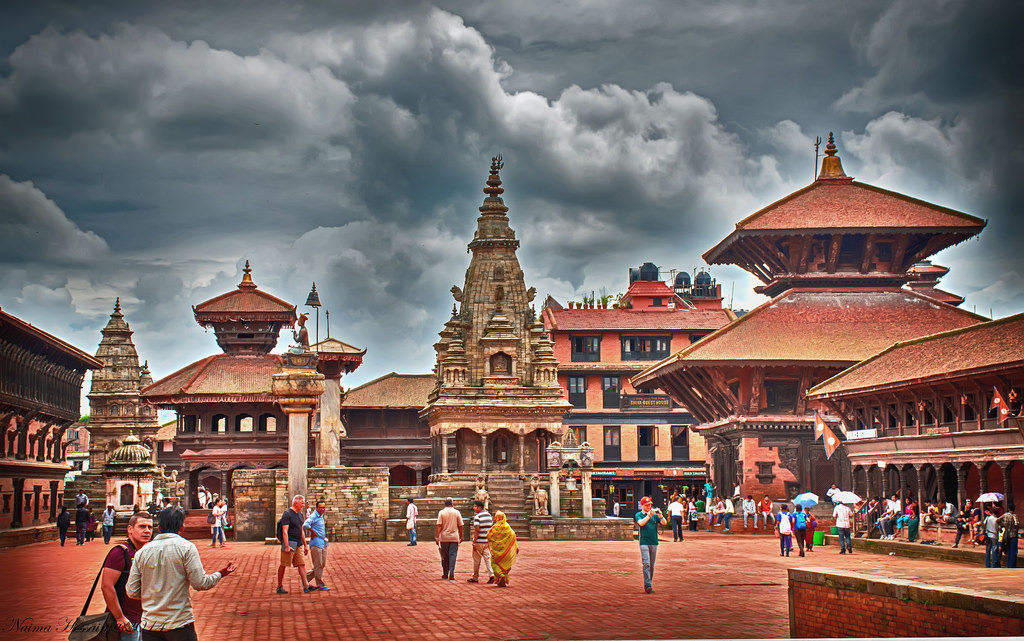
Historical tours in Nepal offer a captivating journey through the country’s rich cultural heritage, ancient civilizations, and architectural marvels. Known for its stunning Himalayan landscapes and spiritual sanctuaries, Nepal boasts a wealth of historical sites that reflect its diverse history. Here’s a detailed look at key highlights and regions commonly featured in historical tours of Nepal:
1. Kathmandu Valley
A UNESCO World Heritage site renowned for its ancient temples and palaces:
- Swayambhunath Stupa: Also known as the Monkey Temple, an ancient religious complex with a mix of Buddhist and Hindu iconography.
- Pashupatinath Temple: One of the holiest Hindu temples dedicated to Lord Shiva, located on the banks of the Bagmati River.
- Boudhanath Stupa: One of the largest stupas in the world, a focal point of Tibetan Buddhism in Nepal.
- Patan Durbar Square: A historic square with medieval palaces, temples, and courtyards showcasing Newar architecture and craftsmanship.
- Bhaktapur Durbar Square: Another ancient royal plaza with well-preserved palaces, temples, and statues, reflecting medieval art and architecture.
2. Lumbini
Birthplace of Lord Buddha, a UNESCO World Heritage site:
- Maya Devi Temple: The exact spot where Buddha was born, with archaeological remains dating back to the 3rd century BCE.
- Ashoka Pillar: Erected by Emperor Ashoka in the 3rd century BCE, indicating Lumbini as Buddha’s birthplace.
3. Pokhara
Known for its natural beauty and historical sites:
- Bindhyabasini Temple: A sacred Hindu temple with stunning views of the Annapurna range.
- World Peace Pagoda: A Buddhist stupa offering panoramic views of Pokhara Valley and Phewa Lake.
- Old Bazaar: An ancient market with traditional Newari architecture and local craftsmanship.
4. Chitwan
Famous for its wildlife and Tharu culture, with historical significance:
- Chitwan National Park: A UNESCO World Heritage site, home to endangered species like the Bengal tiger and one-horned rhinoceros.
- Tharu Cultural Museum: Showcases the cultural heritage of the indigenous Tharu community.
5. Gorkha
Historical capital of the Gorkha Kingdom, known for its ancient fortress:
- Gorkha Durbar: A hilltop fortress and palace complex, offering panoramic views of the surrounding mountains and valleys.
6. Tansen
A hill station with a rich history and cultural heritage:
- Palpa Durbar: A historic palace complex with a blend of Malla and Newari architecture.
- Rani Mahal: A historic palace on the banks of the Kali Gandaki River, known for its architectural beauty and historical significance.
Tour Activities
- Guided Tours: Expert guides provide historical context and insights into each site’s significance.
- Cultural Performances: Traditional dance and music performances showcasing Nepali culture and traditions.
- Hiking and Trekking: Explore ancient trails and pilgrimage routes in the Himalayas.
- Homestays and Local Experiences: Experience Nepali hospitality and traditional lifestyles firsthand.
Best Time to Visit
- Autumn (September to November): Ideal for clear skies, mild temperatures, and vibrant festivals like Dashain and Tihar.
- Spring (March to May): Pleasant weather, blooming rhododendrons, and ideal for outdoor activities.
Historical tours in Nepal offer an enriching experience, combining ancient heritage with breathtaking landscapes and cultural diversity. Whether exploring ancient temples, royal palaces, or natural reserves, these tours promise a deep appreciation of Nepal’s rich history and spiritual significance amidst its awe-inspiring natural beauty.
Conclusion
Historical tours in Nepal weave together a tapestry of ancient civilizations, spiritual sanctuaries, and breathtaking landscapes, offering travelers a profound journey through the country’s rich cultural heritage. From the majestic temples and bustling squares of Kathmandu Valley to the serene birthplace of Lord Buddha in Lumbini, and from the historic fortresses of Gorkha to the natural wonders of Pokhara and Chitwan, these tours showcase Nepal’s diverse history and natural beauty. Engaging in guided tours, experiencing vibrant cultural performances, and exploring ancient monuments, travelers gain deep insights into Nepal’s vibrant traditions and spiritual legacy. Whether visiting during the vibrant autumn festivals or the picturesque spring season, historical tours in Nepal promise an unforgettable exploration that celebrates the country’s unique blend of history, spirituality, and natural splendor.
Historical Tours in Uzbekistan
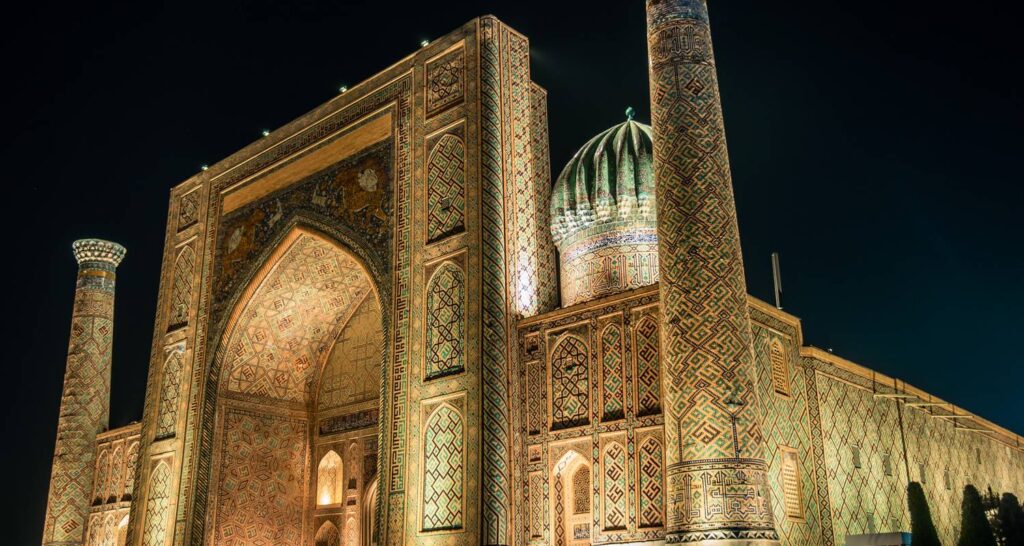
Historical Tours in Uzbekistan offer a fascinating exploration of the country’s rich cultural heritage, ancient cities, and Silk Road history. Known for its stunning architecture, intricate tile work, and vibrant bazaars, Uzbekistan boasts a wealth of historical sites that reflect its position as a crossroads of civilizations. Here’s a detailed look at key highlights and regions commonly featured in historical tours of Uzbekistan:
1. Tashkent
The capital city, blending modernity with historical landmarks:
- Khast Imam Complex: Houses the Muyi Mubarak Library with its ancient Quran and the Barak Khan Madrasah.
- Chorsu Bazaar: A bustling market offering spices, textiles, and local crafts, reflecting Uzbekistan’s vibrant culture.
- Amir Timur Square: Dominated by the statue of Amir Timur, a medieval conqueror who established the Timurid Empire.
2. Samarkand
A UNESCO World Heritage site and the heart of ancient Sogdiana:
- Registan Square: The centerpiece of Samarkand, adorned with three grand madrasahs: Ulugh Beg, Sher-Dor, and Tilya-Kori.
- Gur-e Amir Mausoleum: The tomb of Timur (Tamerlane), known for its stunning blue dome and intricate tile work.
- Shah-i-Zinda Necropolis: A holy site with a series of mausoleums and tombs adorned with turquoise tiles.
3. Bukhara
Another UNESCO World Heritage site, known for its well-preserved medieval architecture:
- Kalon Mosque and Minaret: The heart of Bukhara’s architectural ensemble, featuring the Great Minaret of Kalon.
- Ark Fortress: A historic citadel housing royal palaces, mosques, and a museum showcasing Bukhara’s history.
- Chor Minor: A unique madrasah with four minarets, representing various religious orders.
4. Khiva
A UNESCO World Heritage site and an ancient oasis city:
- Itchan Kala: The old walled city of Khiva, with well-preserved mosques, madrasahs, and palaces.
- Kalta Minor Minaret: A distinctive unfinished minaret, one of Khiva’s iconic landmarks.
- Tash-Hauli Palace: A former royal residence showcasing traditional Khorezm architecture.
5. Shakhrisabz
Birthplace of Amir Timur, known for its historic significance and architecture:
- Ak-Saray Palace: The ruins of Timur’s grand palace complex, featuring monumental gates and majestic arches.
- Dorus-Saodat Complex: A mausoleum complex housing Timurid dynasty tombs, including Timur’s own tomb.
6. Fergana Valley
A fertile region known for its historical sites and traditional crafts:
- Kokand: Visit the Khudayar Khan Palace and Jami Mosque, reflecting Kokand’s historical importance.
- Margilan: Known for its silk production and the historic Yodgorlik Silk Factory.
Tour Activities
- Guided Tours: Expert guides provide historical context and insights into Uzbekistan’s rich cultural heritage.
- Craft Workshops: Experience traditional Uzbek crafts such as ceramics, carpet weaving, and silk embroidery.
- Folk Performances: Enjoy traditional music and dance performances showcasing Uzbekistan’s cultural diversity.
- Culinary Experiences: Sample Uzbek cuisine, known for its flavorful dishes like pilaf, kebabs, and sweets.
Best Time to Visit
- Spring (April to June) and Autumn (September to October): Ideal for mild weather, blooming landscapes, and cultural festivals.
Historical tours in Uzbekistan offer an immersive journey through centuries-old cities, ancient monuments, and vibrant cultural traditions. Whether exploring the majestic architecture of Samarkand, the labyrinthine streets of Bukhara, or the ancient oasis of Khiva, these tours promise a memorable exploration of Uzbekistan’s rich history and cultural diversity.
Conclusion
Historical tours in Uzbekistan offer a mesmerizing exploration of the country’s rich tapestry of culture, architecture, and history. From the grandeur of Samarkand’s Registan Square to the ancient citadel of Bukhara, and from the architectural wonders of Khiva to the birthplace of Amir Timur in Shakhrisabz, these tours reveal Uzbekistan’s pivotal role along the Silk Road and its enduring cultural legacy. Engaging in guided tours, experiencing traditional crafts, and savoring Uzbek cuisine, travelers immerse themselves in a journey through centuries-old cities and majestic monuments. Whether visiting during the mild seasons of spring or autumn, historical tours in Uzbekistan promise an unforgettable experience that celebrates the country’s remarkable heritage and timeless allure.
Historical Tours in Kazakhstan
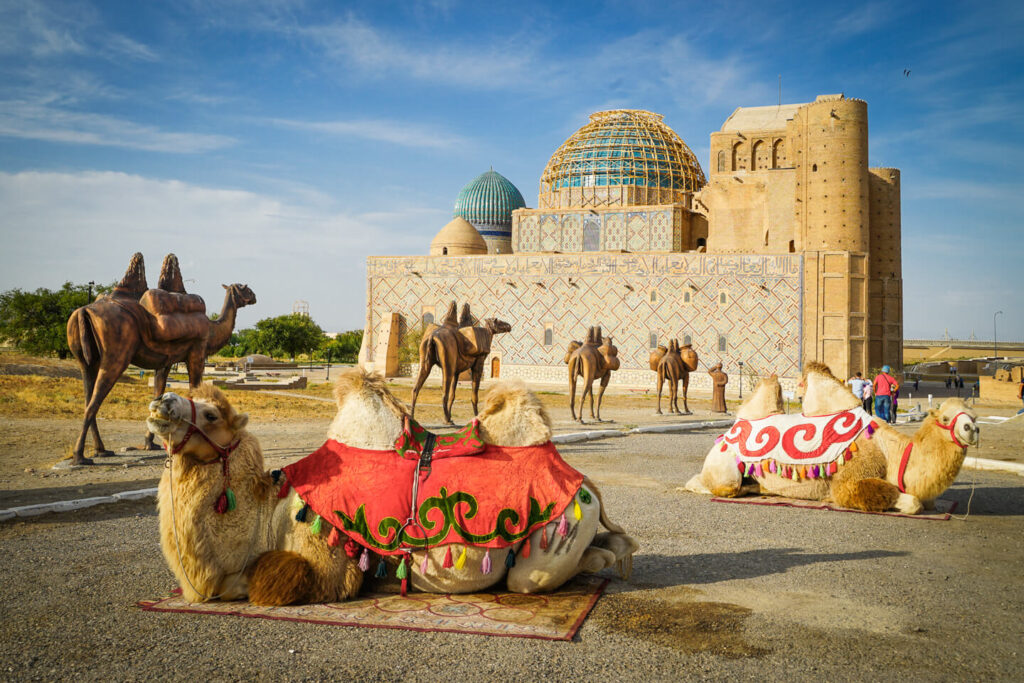
Historical Tours in Kazakhstan offer a captivating exploration of the country’s diverse cultural heritage, ancient civilizations, and unique landscapes. As the world’s largest landlocked country, Kazakhstan boasts a rich history shaped by nomadic tribes, Silk Road trade routes, and Soviet-era developments. Here’s a detailed look at key highlights and regions commonly featured in historical tours of Kazakhstan:
1. Almaty
The cultural and economic hub, blending modernity with historical landmarks:
- Panfilov Park and Zenkov Cathedral: A serene park housing the Ascension Cathedral, built entirely of wood without nails.
- Kok-Tobe Hill: Offering panoramic views of Almaty and the surrounding Tian Shan mountains.
- Central State Museum of Kazakhstan: Showcasing artifacts from Kazakhstan’s history, including traditional Kazakh costumes and archaeological finds.
2. Turkestan
A city steeped in history and home to significant Islamic landmarks:
- Mausoleum of Khoja Ahmed Yasawi: A UNESCO World Heritage site, honoring the Sufi poet and mystic.
- Turkestan Archaeological Museum: Featuring artifacts from the Silk Road era and exhibits on local history.
- Arystan Bab Mausoleum: A pilgrimage site dedicated to Arystan Bab, a revered figure in Kazakh Sufism.
3. Astana (Nur-Sultan)
The modern capital with a blend of futuristic architecture and cultural sites:
- Bayterek Tower: A symbol of Astana, offering panoramic views of the city from its observation deck.
- Palace of Peace and Reconciliation: Designed by Norman Foster, promoting global peace and religious harmony.
- Khan Shatyr Entertainment Center: A tent-like structure housing shops, restaurants, and entertainment venues.
4. Taraz
One of the oldest cities in Kazakhstan, with a rich history and Silk Road connections:
- Aisha-Bibi Mausoleum: An architectural masterpiece and UNESCO site, dedicated to a legendary beauty.
- Karahan Mausoleum: Another significant Silk Road-era monument, known for its unique architecture and historical importance.
- Ancient Taraz Archaeological Museum: Showcasing artifacts from Taraz’s ancient past, including ceramics, jewelry, and coins.
5. Shymkent
A vibrant city with historical and cultural attractions:
- Abay Kunanbayev Museum: Dedicated to the renowned Kazakh poet and philosopher.
- Independence Park: A central park with monuments celebrating Kazakhstan’s independence and cultural heritage.
- Shymkent Zoo: Home to a variety of native and exotic animal species, offering a relaxing retreat for visitors.
6. Balkhash
Known for its unique geographical features and historical significance:
- Balkhash Lake: One of the largest lakes in Kazakhstan, offering opportunities for fishing, boating, and birdwatching.
- Karaganda Region: Historically significant for its Soviet-era labor camps and the Karaganda Museum of Political Repression.
Tour Activities
- Guided Tours: Expert guides provide historical context and insights into Kazakhstan’s diverse cultural heritage.
- Cultural Performances: Enjoy traditional Kazakh music, dance, and folklore performances.
- Nomadic Experiences: Experience the nomadic way of life, including staying in yurts and participating in traditional activities like horseback riding and eagle hunting.
- Culinary Experiences: Sample Kazakh cuisine, featuring dishes like beshbarmak (meat and noodles) and kazy (horse sausage).
Best Time to Visit
- Spring (April to June) and Autumn (September to November): Ideal for mild weather and fewer tourists, perfect for exploring historical sites and enjoying outdoor activities.
Historical tours in Kazakhstan offer a blend of ancient history, cultural diversity, and natural beauty, providing travelers with a unique and immersive experience in this fascinating Central Asian country. Whether exploring ancient Silk Road cities, modern capitals, or experiencing nomadic traditions, these tours promise an enriching journey through Kazakhstan’s rich heritage and vibrant culture.
Conclusion
Historical tours in Kazakhstan offer a remarkable journey through a country rich in cultural heritage, diverse landscapes, and significant historical sites. From the ancient Silk Road cities of Turkestan and Taraz to the modern capital of Astana (Nur-Sultan) with its futuristic architecture, and from the cultural hub of Almaty to the historical depth of Shymkent and Balkhash, these tours unveil Kazakhstan’s multifaceted history. Engaging in guided tours, experiencing traditional nomadic lifestyles, and savoring Kazakh cuisine, travelers immerse themselves in a land where ancient civilizations met and modern influences continue to shape its identity. Whether visiting during the serene seasons of spring or autumn, historical tours in Kazakhstan promise an unforgettable exploration that celebrates the country’s rich heritage and dynamic evolution.
Historical Tours in Pakistan
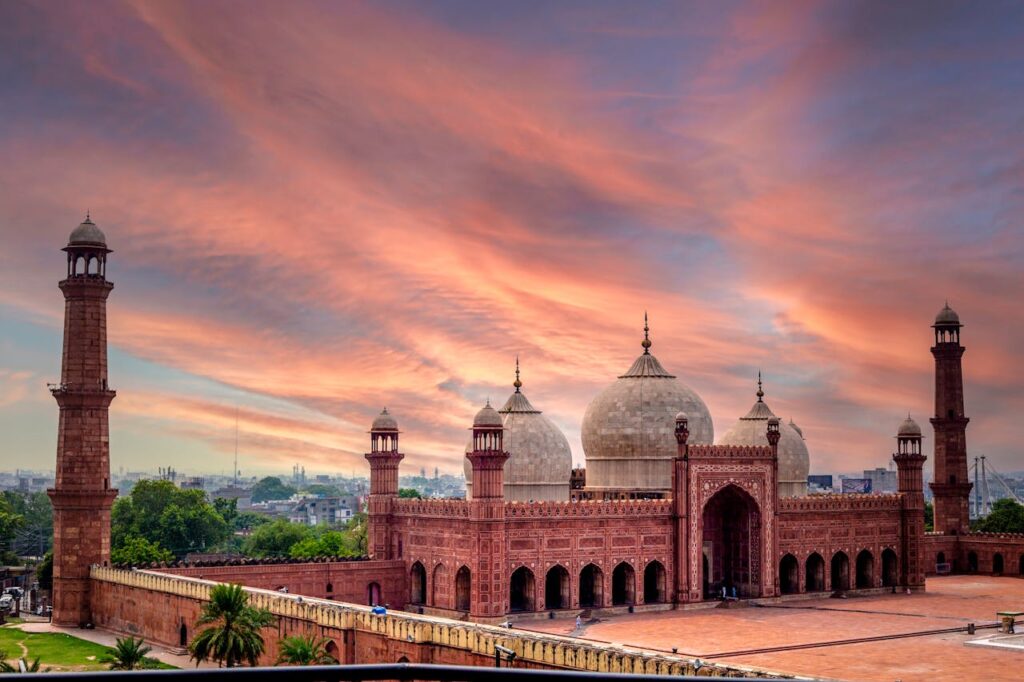
Historical Tours in Pakistan offer a profound exploration of the country’s rich cultural heritage, ancient civilizations, and architectural marvels. From the ancient Indus Valley Civilization to the grand Mughal Empire and the colonial influences, Pakistan boasts a diverse range of historical sites that reflect its multicultural past. Here’s a detailed look at key highlights and regions commonly featured in historical tours of Pakistan:
1. Lahore
A cultural and historical hub with Mughal-era landmarks:
- Lahore Fort (Shahi Qila): A UNESCO World Heritage site with palaces, mosques, and gardens, including the iconic Sheesh Mahal.
- Badshahi Mosque: One of the largest mosques in the world, renowned for its grandeur and Mughal architecture.
- Shalimar Gardens: A Mughal garden complex featuring terraces, fountains, and pavilions.
2. Karachi
Pakistan’s largest city with a blend of historical and modern landmarks:
- Quaid-e-Azam’s Mausoleum: The final resting place of Muhammad Ali Jinnah, the founder of Pakistan, reflecting modern Islamic architecture.
- Mohatta Palace: A historic palace-turned-museum, showcasing art and artifacts from the British Raj era.
- Clifton Beach: A popular seaside destination with views of the Arabian Sea and historical significance during British rule.
3. Islamabad
The modern capital city with significant cultural and historical sites:
- Pakistan Monument: A national monument representing Pakistan’s four provinces and three territories.
- Lok Virsa Museum: Showcasing the cultural heritage of Pakistan, including traditional crafts, music, and folk art.
- Faisal Mosque: One of the largest mosques globally, known for its modern architecture and stunning location in the Margalla Hills.
4. Taxila
An ancient archaeological site and UNESCO World Heritage site:
- Taxila Museum: Housing artifacts from the Gandhara civilization, including sculptures, coins, and pottery.
- Taxila Ruins: Ancient Buddhist monasteries, stupas, and the Dharmarajika stupa complex, reflecting the region’s Buddhist heritage.
5. Peshawar
A city with a rich history and cultural diversity:
- Peshawar Museum: Featuring artifacts from the Gandhara civilization, including Buddhist relics and ancient coins.
- Qissa Khwani Bazaar: A historic market known for its storytelling traditions and cultural vibrancy.
- Bala Hisar Fort: A historic fort with views of Peshawar city, reflecting its strategic importance throughout history.
6. Mohenjo-daro
An ancient city of the Indus Valley Civilization, a UNESCO World Heritage site:
- Great Bath: A well-preserved public bathing area, considered one of the earliest examples of urban planning.
- Stupa and Buddhist Monastery: Reflecting Mohenjo-daro’s later Buddhist period after the decline of the Indus Valley Civilization.
Tour Activities
- Guided Tours: Expert guides provide historical context and insights into Pakistan’s diverse cultural heritage.
- Cultural Performances: Enjoy traditional music, dance, and festivals showcasing Pakistan’s cultural diversity.
- Culinary Experiences: Sample Pakistani cuisine, known for its rich flavors and variety, including dishes like biryani, kebabs, and sweets.
- Handicraft Workshops: Learn traditional crafts such as pottery, carpet weaving, and embroidery.
Best Time to Visit
- Spring (March to May) and Autumn (September to November): Ideal for mild temperatures and clear skies, perfect for exploring historical sites and enjoying outdoor activities.
Historical tours in Pakistan promise a captivating journey through millennia of history, from ancient civilizations to modern-day cultural landmarks. Whether exploring the grandeur of Lahore’s Mughal architecture, the ancient ruins of Taxila, or the vibrant culture of Peshawar, these tours offer an enriching experience that celebrates Pakistan’s rich heritage and cultural diversity.
Conclusion
Historical tours in Pakistan offer a compelling journey through a land steeped in ancient civilizations, cultural diversity, and architectural marvels. From the majestic forts and palaces of Lahore to the ancient Buddhist ruins of Taxila, and from the bustling streets of Karachi to the serene landscapes of Mohenjo-daro, these tours showcase Pakistan’s rich tapestry of history and heritage. Engaging in guided tours, experiencing vibrant cultural traditions, and savoring the flavors of Pakistani cuisine, travelers immerse themselves in a land where ancient civilizations once flourished and modern influences continue to shape its identity. Whether visiting during the vibrant spring blooms or the crisp autumn months, historical tours in Pakistan promise an unforgettable exploration that celebrates the country’s profound historical significance and cultural resilience.
Historical Tours in Turkey
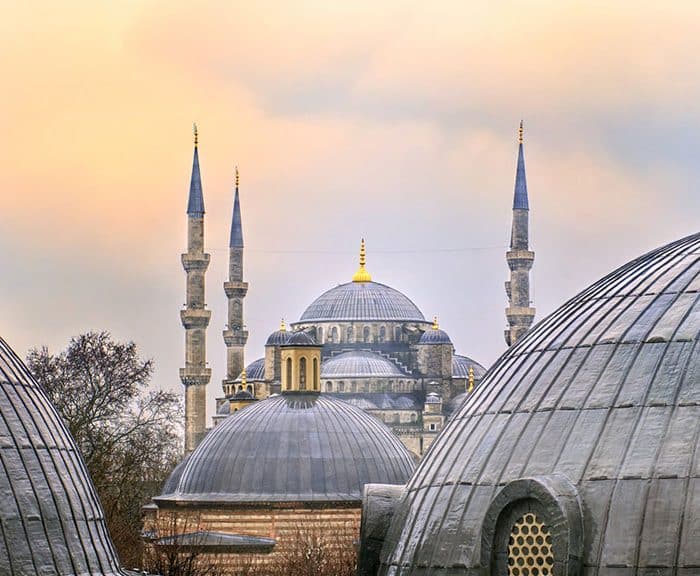
Historical Tours in Turkey offer a captivating journey through millennia of history, spanning ancient civilizations, medieval empires, and modern cultural influences. As a crossroads between Europe and Asia, Turkey boasts a wealth of historical sites that reflect its diverse heritage. Here’s a detailed look at key highlights and regions commonly featured in historical tours of Turkey:
1. Istanbul
Turkey’s cultural and historical heart, straddling Europe and Asia:
- Hagia Sophia: A UNESCO World Heritage site and former Byzantine cathedral, later converted into a mosque and now a museum showcasing Byzantine and Ottoman architecture.
- Topkapi Palace: The former imperial residence of Ottoman sultans, featuring opulent courtyards, halls, and a treasury.
- Blue Mosque (Sultan Ahmed Mosque): Known for its stunning blue tiles and six minarets, an iconic symbol of Istanbul.
2. Ephesus
An ancient Greek city and major Roman center on the Aegean coast:
- Library of Celsus: A beautifully restored Roman building that once held over 12,000 scrolls.
- Ephesus Theater: An ancient amphitheater where St. Paul preached to the Ephesians.
- Temple of Artemis: One of the Seven Wonders of the Ancient World, now marked by a single column.
3. Cappadocia
Famous for its unique landscape and rock-cut churches:
- Goreme Open-Air Museum: A UNESCO World Heritage site with rock-cut churches and frescoes dating back to the Byzantine era.
- Fairy Chimneys: Natural rock formations scattered across the region, often used as homes and churches by early Christians.
- Hot Air Balloon Rides: Offering panoramic views of Cappadocia’s surreal landscape at sunrise.
4. Pamukkale
Known for its thermal waters and ancient Hierapolis:
- Travertine Terraces: Calcium carbonate terraces formed by mineral-rich thermal waters, resembling a snowy landscape.
- Hierapolis Archaeological Site: Ruins of an ancient Greco-Roman city, featuring a well-preserved theater, necropolis, and Roman baths.
5. Troy
An ancient city immortalized in Homer’s epic poems:
- Troy Archaeological Site: Layers of ruins revealing nine ancient cities built one on top of the other, including the famous Trojan Horse replica.
- Archaeological Museum of Troy: Houses artifacts excavated from the site, offering insights into the city’s history and mythology.
6. Gallipoli
A poignant World War I battlefield and memorial site:
- Anzac Cove: Landing site of the Allied forces during the Gallipoli Campaign, now a memorial to soldiers from Australia, New Zealand, and Turkey.
- Gallipoli Peninsula Historical National Park: Preserves trenches, cemeteries, and memorials from the campaign, offering a solemn reminder of the war’s impact.
Tour Activities
- Guided Tours: Expert guides provide historical context and insights into Turkey’s rich cultural heritage.
- Cultural Performances: Enjoy traditional Turkish music, dance, and folklore performances.
- Culinary Experiences: Sample Turkish cuisine, including kebabs, baklava, and Turkish delight.
- Shopping: Explore bazaars for carpets, ceramics, spices, and handicrafts.
Best Time to Visit
- Spring (April to June) and Autumn (September to November): Ideal for mild temperatures and fewer crowds, perfect for exploring historical sites and enjoying outdoor activities.
Historical tours in Turkey promise an enriching experience, combining ancient history, architectural wonders, and vibrant cultural traditions. Whether exploring the ancient ruins of Ephesus, marveling at the fairy chimneys of Cappadocia, or experiencing the bustling streets of Istanbul, these tours offer a deep dive into Turkey’s diverse heritage and timeless allure.
Conclusion
Historical tours in Turkey offer an immersive journey through centuries of civilization, blending ancient marvels, medieval grandeur, and modern cultural vibrancy. From the iconic landmarks of Istanbul like the Hagia Sophia and Topkapi Palace to the ancient ruins of Ephesus and the surreal landscapes of Cappadocia, Turkey’s historical sites captivate with their rich history and architectural splendor. Engaging in guided tours, experiencing vibrant cultural traditions, and savoring the flavors of Turkish cuisine, travelers are enveloped in a tapestry of civilizations that have shaped this crossroads between East and West. Whether visiting during the tranquil seasons of spring or autumn, historical tours in Turkey promise an unforgettable exploration that celebrates the country’s diverse heritage and enduring influence on world history and culture.
Historical Tours in Iran
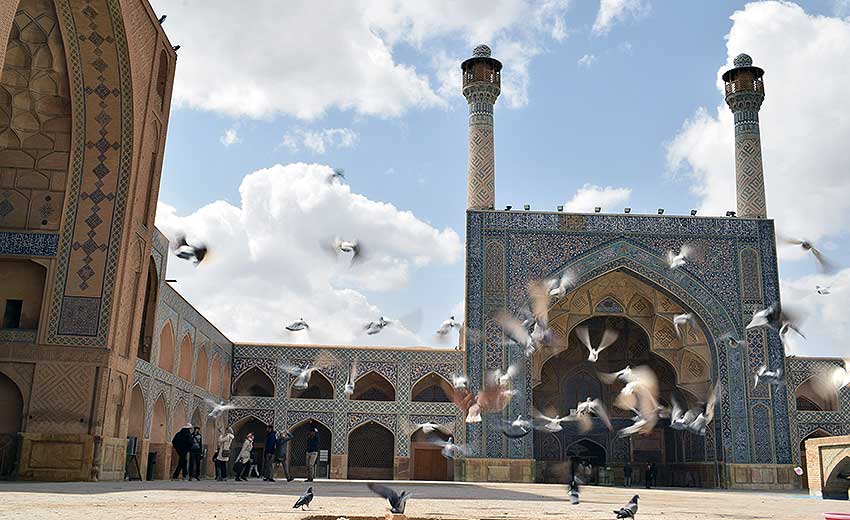
Historical Tours in Iran offer a fascinating exploration of the country’s rich cultural heritage, ancient civilizations, and architectural wonders. Iran, once the heart of the ancient Persian Empire and a crossroads of civilizations, boasts a wealth of historical sites that reflect its diverse history and cultural influences. Here’s a detailed look at key highlights and regions commonly featured in historical tours of Iran:
1. Tehran
The bustling capital city with a blend of modernity and historical landmarks:
- Golestan Palace: A UNESCO World Heritage site, featuring royal buildings, gardens, and museums showcasing Persian art and architecture.
- National Museum of Iran: Houses artifacts dating back to ancient Persia, including pottery, coins, and the Cyrus Cylinder.
- Milad Tower: A modern landmark offering panoramic views of Tehran and housing a revolving restaurant and observation deck.
2. Persepolis
An ancient city and ceremonial capital of the Persian Empire:
- Persepolis Archaeological Site: UNESCO World Heritage site with ruins of palaces, temples, and the famous Apadana staircase.
- Naqsh-e Rustam: Tombs of Persian kings carved into the cliffside, including the tomb of Darius the Great.
3. Isfahan
A city known for its stunning Islamic architecture and Persian gardens:
- Naqsh-e Jahan Square: One of the largest squares in the world, surrounded by architectural masterpieces like the Sheikh Lotfollah Mosque, Imam Mosque, and Ali Qapu Palace.
- Chehel Sotoun: A pavilion and garden complex with beautiful frescoes depicting courtly life during the Safavid dynasty.
- Khaju Bridge: A historic bridge spanning the Zayandeh River, known for its architectural beauty and acoustic design.
4. Shiraz
A city of poets, gardens, and ancient history:
- Persepolis: Just outside Shiraz, this ancient capital of Persia is a must-see for its monumental ruins.
- Eram Garden: A UNESCO World Heritage Persian garden with beautiful pavilions and lush greenery.
- Nasir al-Mulk Mosque (Pink Mosque): Known for its stunning stained glass windows that create a vibrant display of colors during sunrise.
5. Yazd
A desert city known for its adobe architecture and Zoroastrian heritage:
- Yazd Old Town: A labyrinthine network of alleys and mud-brick buildings, preserving the traditional architecture of the region.
- Zoroastrian Fire Temple: Houses a sacred fire that has been burning for over 1,500 years, a significant pilgrimage site for Zoroastrians.
- Yazd Water Museum: Showcases the ancient qanat system and traditional methods of water management in the desert.
6. Kashan
Famous for its historical houses and Persian gardens:
- Tabatabaei House: A beautifully restored merchant house showcasing traditional Persian architecture and design.
- Fin Garden: A UNESCO World Heritage Persian garden with lush greenery, fountains, and historical pavilions.
- Agha Bozorg Mosque: A stunning mosque and madrasa complex known for its symmetrical design and intricate tile work.
Tour Activities
- Guided Tours: Expert guides provide historical context and insights into Iran’s rich cultural heritage.
- Cultural Performances: Enjoy traditional Persian music, dance, and theater performances.
- Culinary Experiences: Sample Iranian cuisine, including kebabs, stews like khoresh and fesenjan, and Persian sweets.
- Shopping: Explore bazaars for carpets, handicrafts, spices, and traditional Persian artworks.
Best Time to Visit
- Spring (March to May) and Autumn (September to November): Ideal for mild temperatures and fewer tourists, perfect for exploring historical sites and enjoying outdoor activities.
Historical tours in Iran promise an enriching journey through a land of ancient civilizations, architectural splendors, and cultural treasures. Whether exploring the grandeur of Persepolis, marveling at the Islamic architecture of Isfahan, or wandering through the historic bazaars of Tehran, these tours offer a deep dive into Iran’s rich heritage and enduring cultural legacy.
Conclusion
Historical tours in Iran offer a mesmerizing journey through a country steeped in ancient history, vibrant culture, and architectural marvels. From the magnificent ruins of Persepolis to the exquisite mosques and palaces of Isfahan, and from the bustling bazaars of Tehran to the serene gardens of Shiraz and Kashan, Iran’s historical sites captivate with their beauty and significance. Engaging in guided tours, experiencing traditional Persian hospitality, and savoring the flavors of Iranian cuisine, travelers immerse themselves in a land where ancient civilizations flourished and diverse cultures converged. Whether visiting during the mild seasons of spring or autumn, historical tours in Iran promise an unforgettable exploration that celebrates the country’s rich heritage and timeless allure, offering insights into its profound impact on world history and culture.
Historical Tours in Jordan
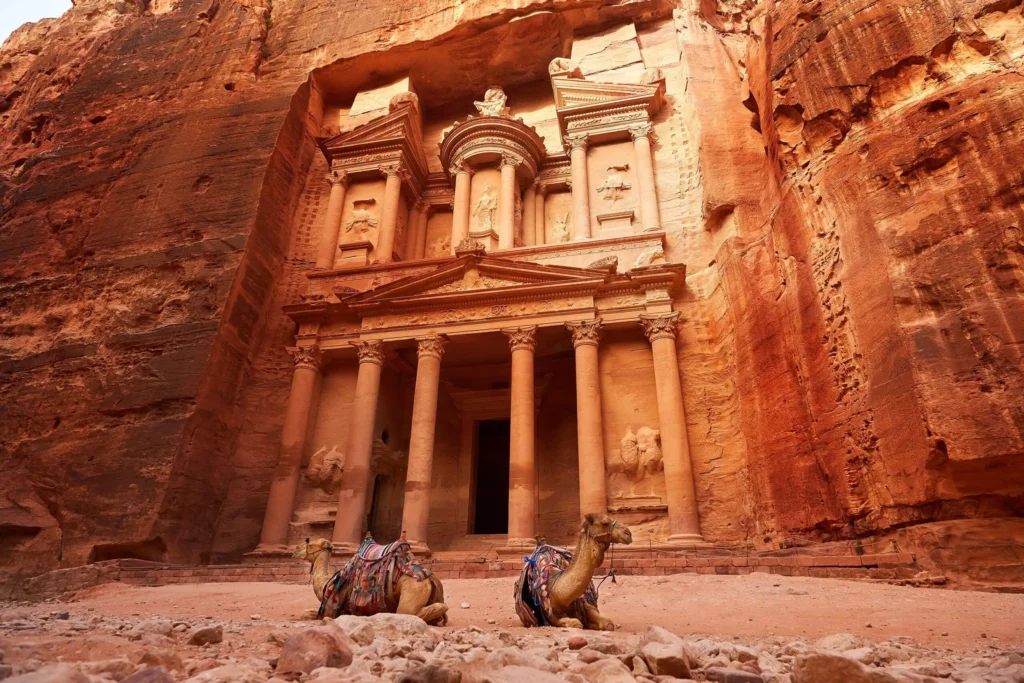
Historical Tours in Jordan offer a captivating journey through a land rich in ancient civilizations, biblical sites, and desert landscapes. Jordan’s strategic location at the crossroads of Africa, Asia, and Europe has endowed it with a wealth of historical and archaeological treasures. Here’s a detailed look at key highlights and regions commonly featured in historical tours of Jordan:
1. Petra
An ancient Nabatean city and UNESCO World Heritage site:
- Al-Khazneh (The Treasury): Iconic sandstone facade carved into a cliff, often seen as Petra’s most famous monument.
- The Siq: A narrow canyon leading to Petra’s main sites, with stunning rock formations and archaeological remnants.
- Royal Tombs: Elaborately carved burial chambers and facades showcasing Nabatean architectural prowess.
2. Jerash
One of the best-preserved Roman provincial cities in the world:
- Hadrian’s Arch: A triumphal arch built to honor Emperor Hadrian’s visit to Jerash.
- Oval Plaza: A vast public square surrounded by colonnades and adorned with temples and fountains.
- South Theater: A well-preserved Roman theater still used for performances today.
3. Amman
The modern capital with ancient roots dating back to the Neolithic period:
- Amman Citadel (Jabal al-Qal’a): An archaeological site with remains from various civilizations, including the Roman Temple of Hercules.
- Roman Theater: A 2nd-century Roman theater carved into the hillside, offering panoramic views of downtown Amman.
- Jordan Archaeological Museum: Houses artifacts from archaeological sites across Jordan, providing insights into the country’s history.
4. Wadi Rum
A desert valley known for its stunning desert landscapes and Bedouin culture:
- Desert Jeep Tours: Explore the dramatic rock formations, sand dunes, and ancient petroglyphs scattered throughout Wadi Rum.
- Lawrence’s Spring: Named after Lawrence of Arabia, who reputedly rested here during the Arab Revolt.
- Bedouin Camp Experience: Overnight stays in traditional Bedouin camps, experiencing hospitality and cultural traditions.
5. Madaba
Famous for its Byzantine and Umayyad mosaics:
- Madaba Mosaic Map: A 6th-century mosaic map depicting the Holy Land from Jordan to Palestine, housed in the Church of Saint George.
- Mount Nebo: A biblical site where Moses is said to have viewed the Promised Land, with panoramic views of the Jordan Valley.
6. Dead Sea
A unique natural wonder and the lowest point on Earth:
- Floating in the Dead Sea: Experience the buoyancy of its salt-rich waters, renowned for their therapeutic properties.
- Dead Sea Scrolls: Visit the caves of Qumran, where the ancient Dead Sea Scrolls were discovered, offering insights into early Jewish life and religion.
Tour Activities
- Guided Tours: Expert guides provide historical context and insights into Jordan’s diverse cultural heritage.
- Cultural Performances: Enjoy traditional music, dance, and folklore performances showcasing Jordanian heritage.
- Culinary Experiences: Sample Jordanian cuisine, including dishes like mansaf (a traditional Bedouin dish) and mezze (assorted appetizers).
- Shopping: Explore local markets for handicrafts, spices, and traditional Jordanian goods.
Best Time to Visit
- Spring (March to May) and Autumn (September to November): Ideal for mild temperatures and clear skies, perfect for exploring historical sites and enjoying outdoor activities.
Historical tours in Jordan promise an enriching journey through a land where ancient civilizations have left their mark on stunning landscapes and vibrant cultures. Whether exploring the rose-red city of Petra, marveling at the Roman ruins of Jerash, or experiencing Bedouin hospitality in Wadi Rum, these tours offer a deep dive into Jordan’s rich history and enduring cultural legacy.
Conclusion
Historical tours in Jordan offer an unforgettable exploration of a country steeped in ancient history, cultural diversity, and natural beauty. From the awe-inspiring rock-cut architecture of Petra to the well-preserved Roman ruins of Jerash, and from the vibrant streets of Amman to the tranquil desert landscapes of Wadi Rum, Jordan’s historical sites captivate with their richness and significance. Engaging in guided tours, experiencing Bedouin hospitality, and savoring the flavors of Jordanian cuisine, travelers immerse themselves in a land where ancient civilizations thrived and diverse cultures converged. Whether visiting during the serene seasons of spring or autumn, historical tours in Jordan promise an enriching journey that celebrates the country’s profound heritage and timeless allure, offering insights into its pivotal role in shaping human history and culture.
Conclusion
From the ancient wonders of China’s Great Wall to the majestic temples of Angkor in Cambodia, and from the vibrant cultural tapestries of India to the stunning desert landscapes of Jordan, historical tours across these diverse countries promise an enriching journey through millennia of human civilization. Each destination unveils unique treasures, reflecting rich cultural heritages, architectural marvels, and profound historical legacies.
In China, travelers can trace the footsteps of emperors through the Forbidden City and marvel at the engineering marvel that is the Great Wall. Japan offers a blend of ancient tradition and modern innovation, with serene temples and poignant reminders of World War II. South Korea’s palaces and historic sites reveal a dynamic cultural evolution, while Thailand’s ancient capitals and vibrant cities showcase the kingdom’s spiritual and royal legacies.
Vietnam and Cambodia share the legacy of the ancient Khmer Empire, with Cambodia’s Angkor Wat standing as a testament to architectural genius and spiritual devotion. Indonesia’s diversity is mirrored in its Hindu and Buddhist temples, alongside colonial heritage and natural beauty. India’s forts, palaces, and sacred sites narrate tales of ancient kingdoms and spiritual awakening.
Sri Lanka’s ancient cities and colonial charm offer a glimpse into its multicultural past, while Nepal’s Himalayan kingdoms and spiritual sanctuaries captivate with their natural beauty and religious significance. Uzbekistan and Kazakhstan, once hubs of the Silk Road, boast cities like Samarkand and Almaty, where Islamic architecture and nomadic traditions converge.
Pakistan’s historical tours delve into the civilizations of the Indus Valley and the grandeur of Mughal architecture, while Turkey’s blend of Byzantine, Ottoman, and modern influences is evident in its cities, from Istanbul’s mosques to Cappadocia’s fairy chimneys. Iran’s ancient ruins and Islamic heritage stand as testaments to its position at the crossroads of civilizations.
Lastly, Jordan’s biblical landmarks, desert fortresses, and the timeless rose-red city of Petra embody a land steeped in history and cultural richness. Each country offers not just historical sites, but a narrative of resilience, innovation, and cultural exchange that has shaped the world we live in today.
Whether exploring the bustling markets of Istanbul, trekking through the Himalayas in Nepal, or marveling at the rock-cut temples of Ellora in India, historical tours in these countries promise an unforgettable journey through time, offering insights into humanity’s shared past and the enduring legacy of civilizations across continents.
